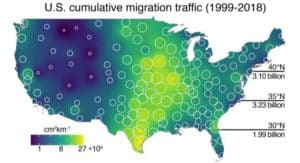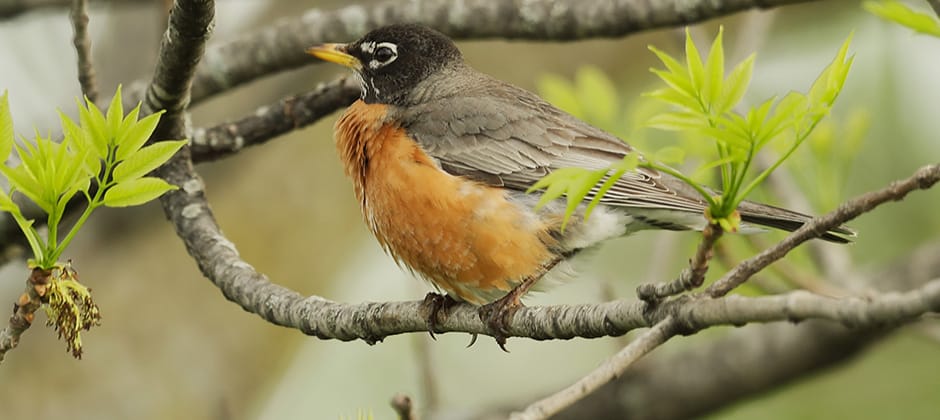Share this article
Artificial intelligence can help analyze bird migrations
While researchers have been able to track birds migrating at night using National Weather Service radar, sometimes it’s just too much data to go through in order to answer bigger questions they may have.
“These huge radar networks are constantly collecting data about birds, and we haven’t really been able to access that information as much as we’d like,” said Daniel Sheldon, an associate professor at the University of Massachusetts at Amherst. “It was clear some new technology was needed.”
Sheldon led a study published in Methods in Ecology and Evolution looking at how an artificial intelligence model he and his colleagues developed called MistNet compared to humans simply analyzing the data on their own.
With about 160 radars in the continental U.S. collecting new data files every four to 10 minutes for more than two decades, the dataset is huge, Sheldon said.
“Until recently, people have only been able analyze small subsets of the data,” he said. They would look at radar images and use their knowledge together with visual patterns to distinguish rain from the birds. “These manual steps limited our ability to answer the broad-scale questions.”

This map shows estimates of migration traffic from measurements at 143 radar stations. Courtesy of the authors and Kyle G. Horton.
Sheldon and his colleagues developed a computer vision model inspired by the way that people interpret the radar images. With improvements in AI and the ability to use these large radar networks, the team put together what they called MistNet, which can analyze weather radar and detect overnight bird migrations.
“It worked quite well,” Sheldon said. He and his team compared it to human judgment and found MistNet accounted for about 96% of the bird migration traffic over the US that humans accounted for.
MistNet can look at more data at once and answer more broad-scale questions than people would be able to do on their own, Sheldon said. “We’re interested in the potential effects of climate change on birds and bird migration and whether we can see this in these 20-plus years of records,” he said. He hopes MistNet can also help researchers understand how population sizes are changing for migratory birds, changes in timing of migration year to year and correlations with things like weather.
MistNet is now available in a software package, Sheldon said. The team plans to continue updating the MistNet technology to improve its performance.
“We’re confident now we can extract some answers to these big aggregate questions that we haven’t been able to answer,” Sheldon said. “Over time we hope to be able to zoom in and make very fine-grained judgments using this technology.”
Header Image: New AI technology called MistNet can help track bird migrations using weather radar data for species like the American robin (Turdus migratorius). ©John Benson








